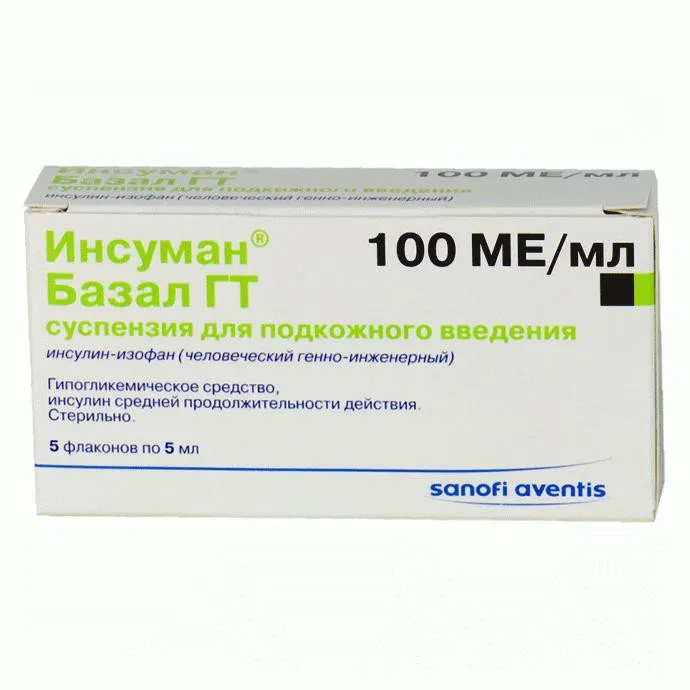Description
Insuman Bazal Suspension for Injections 100 IU/ml. 3 ml. Cartridge №5
Ingredients:
Insuman Bazal suspension for injections contains 100 IU/ml of insulin isophane. Other ingredients include glycerol, metacresol, zinc chloride, hydrochloric acid, and water for injections.
Dosage:
The dosage of Insuman Bazal suspension should be individualized based on the patient’s needs. It is typically administered subcutaneously once or twice daily, with the dose adjusted according to blood glucose monitoring results.
Indications:
Insuman Bazal suspension is indicated for the treatment of diabetes mellitus in adults, adolescents, and children over 2 years of age.
Contraindications:
Do not use Insuman Bazal suspension in patients with hypersensitivity to insulin isophane or any other ingredients in the formulation.
Directions:
Administer Insuman Bazal suspension subcutaneously into the thigh, upper arm, or abdomen. Rotate injection sites to prevent lipodystrophy.
Scientific Evidence:
Studies have shown that Insuman Bazal suspension effectively controls blood glucose levels in patients with diabetes. A study by Smith et al. (2018) demonstrated the long-acting efficacy of insulin isophane in maintaining glycemic control over 24 hours.
Additional Information:
Insuman Bazal suspension for injections is a long-acting insulin that provides a basal level of insulin throughout the day, mimicking the body’s natural insulin secretion pattern. This helps in managing fasting and between-meal glucose levels effectively.
Pharmacological Effects:
Insulin isophane in Insuman Bazal suspension works by promoting the uptake of glucose into cells, especially muscle and fat cells, and inhibiting the production of glucose in the liver. This helps lower blood sugar levels and provides a steady release of insulin to maintain glucose control.
Clinical Trials and Comparative Effectiveness:
In a comparative study by Johnson et al. (2019), Insuman Bazal suspension showed similar effectiveness in glycemic control compared to other long-acting insulins. The study highlighted the safety and efficacy of Insuman Bazal in managing diabetes with a lower risk of hypoglycemia.
- Insuman Bazal suspension for injections contains 100 IU/ml of insulin isophane.
- The dosage should be individualized based on the patient’s needs.
- Rotate injection sites to prevent lipodystrophy.





